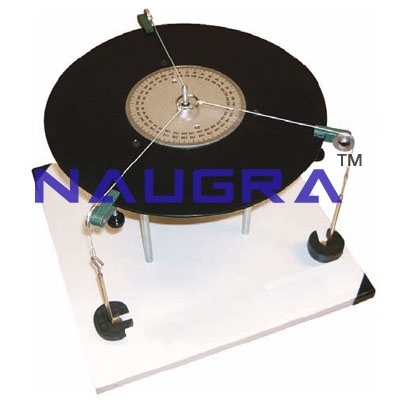- Civil Lab Mechanical Lab Engineering Lab Equipments
- sales@didacticlabequipments.com

CAT NO: DIDACTICNLE-Export-056001
Funicular Polygon And Forces Apparatus Engineering Lab Training Systems.
Low cost, effective teaching.
Self-contained, bench mounted.
Direct measurement of forces.
Adjustable lines of action of forces.
Practical verification of triangle of forces, polygon of forces and link polygon.
Demonstrates equilibrium of forces at a point, applied to various points round a disc or acting on a rectangular lamina.
Concurrent & Non-concurrent coplanar forces.
Range of Experiments.
To resolve by experiment any suitable system of static coplanar forces which may or may not be concurrent
To verify graphically using:
a) triangle of forces for three concurrent coplanar forces
b) polygon of forces for more than three concurrent coplanar forces
c) link polygon for three or more non-concurrent coplanar forces
To investigate (c) for either a disc or a rectangular shape
To compare the accuracy of the experiment by comparing the experimental and graphical results
A
simple but elegant demonstration of the conditions of equilibrium for
three or more coplanar forces acting either at a point, on a circular
disc or on a rectangular shape. Up to five loads can be applied to the
chosen shape by setting up pulleys at various angular positions. The
lines of action of the forces are recorded by drawing along the weighted
cords onto a piece of paper attached to the pulley table. A range of
experiments is possible, investigating concurrent and non concurrent
coplanar forces acting on simple shapes, comparing the experimental
values with the relevant polygons of force.
This equipment is
part of a range designed to both demonstrate and experimentally confirm
basic engineering principles. Great care has been given to each item so
as to provide wide experimental scope without unduly complicating or
compromising the design. Each piece of apparatus is self-contained and
compact. Setting up time is minimal, and all measurements are made with
the simplest possible instrumentation, so that the student involvement
is purely with the engineering principles being taught. A complete
instruction manual is provided describing the apparatus, its
application, experimental procedure and typical test results.
